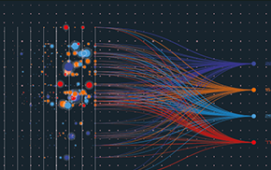The electronic trading marketplace has been an early adopter of FPGA technology, most often to accelerate I/O and basic feed handling. Now, firms are looking to use FPGAs for more complex business logic. IntelligentTradingTechnology.com spoke to Mohammad Darwish, president and CEO of AdvancedIO Systems, about this trend.
Q: Firstly, let’s find out some more about AdvancedIO Systems – some history and what you do?
A: AdvancedIO Systems has been in business just over eight years and going strong. When the market was busy building TOE chips for commodity network cards, we made a strategic decision to use FPGA technology as basis to create the first 10gE programmable network card and sold it to Lockheed Martin back in 2005. The Defense industry is typically an early adopter of technology and at the time there was nothing like it on the market that was built for real time operation. The programmability aspect of the design coupled with its deterministic latency and sustained high bandwidth capabilities made it a perfect match for Lockheed’s application. The financial market took interest in our products for that exact same reason. We are today a key component of a few state of the art trading platforms and have contributed, in a small way, to helping our customers achieve their business objectives. I am pleased that our strategy has proven successful.
Q: What products do you have that are best suited to ultra-low latency financial applications?
A: Going back to our core real time expertise, we provide today a range of high performance 10gE programmable network cards and the right toolset to help financial customers fast track their product development. Our customers are saying we are measuring the lowest latency on the market. This is exciting. I think it is a result of our focus on real time architectures.
If I may take the opportunity, we will be unveiling our fifth generation network card product at the Low Latency Summit on March 27 in London. The V5031 is a PCI Express Gen 3 card based on the latest 28nm Stratix V FPGA technology from Altera.
Q: And how do these help trading firms reduce latency and jitter?
A: I think reducing latency is done through careful overall design optimisation while improving jitter requires introducing determinism in the system. The very nature of FPGA technology is fundamental to help achieve these goals. Consider when an FPGA is programmed, it is like connecting the wires in a computer chip. The operations inside the FPGA can be made to all run in parallel which provides incredible low latency and rigid deterministic jitter free operation. About a decade ago, conversations around 10gE and FPGA technology required a significant effort especially in a conservative and risk-averse market like the military. Today, there is little debate that for real time performance, FPGA technology is a good choice.
Q: What functions are trading firms running on the FPGA on your card – is it just I/O processing or something more akin to business logic?
A: This really depends on the customer and the application. Some customers need a high performance, ultra low latency network interface to pass the data to the host processors as fast as possible. Others take advantage of the programmability aspect to implement specific business logic that improves the overall system performance.
The detection of a market condition, the execution of trading strategies, and inspection of outgoing trade execution parameters to meet risk controls are functions commonly put on our cards today. We see a movement toward implementing more and more of the business logic on the FPGA as we deliver more powerful systems and tools to simplify application development with FPGA technology. We also see a movement toward adjacent applications that can benefit from low latency and jitter-free operation such as circuit breakers, matching engines, and clearing functions.
Q: What tools do you provide to help developers write code for FPGAs?
A: We find that the market has two camps. Some customers have excellent FPGA design capabilities so they leverage our expressXG development toolset to help them develop new products quickly and reduce their schedule risk. Others are content with writing applications in a high level language like C but they could benefit from the performance our FPGA network cards provide. For that purpose, we are integrating our toolset with higher level tools like OpenCL to help customers port their applications onto our cards.
Q: What do you see as the direction for FPGA technology. How do you expect to be leveraging it in the future? What’s next for your company?
A: In the chip world it is all about higher density, faster speed, and lower power. Historically, FPGA technology has followed processor technology with a few months delay. Right now, the Stratix V devices from Altera are using 28nm technology which is where processors were a year or so ago. Processors are now using 22nm technology and there is talk about going next to 14nm. So we can expect FPGA technologies to follow this path to higher densities and faster speed. Suffice to say, this will enable the development of more sophisticated financial products.
We will continue to keep up with the latest FPGA technology and have demonstrated our ability to bring new products to market in a very short time. We are looking at a bigger picture though to see where we could help the financial market and our customers make their systems more efficient and more powerful, which may include more than just FPGA technology. The next few months will be very exciting as we continue to release innovative new products and architectures which promise significantly higher performance and simpler implementation than today’s state of the art.
Subscribe to our newsletter




